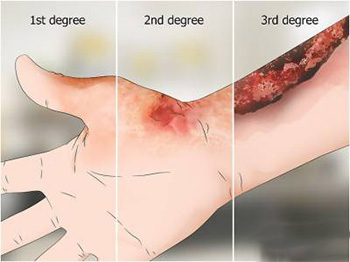
How to Treat Burns?
Burns have long been an area of medicine that has been very difficult to treat and care for. Burning of the outer surface of the body with water or a similar substance is the most common type of burn. Apart from this, burning with flame, contact with hot substances and burning with electricity are quite common in our country. Most burns occur in childhood and most of them occur due to heating and feeding equipment. Burns are called first, second and third degree burns depending on the depth of the burned skin. The width of the burn is as important as its depth. Burns over 30% of the body surface are life-threatening, regardless of their depth. In children, this width decreases to 20% depending on the depth. Electrical burns are handled differently than other burns; at the time of the first burn, the heart may stop or arrhythmia due to the effect of electric current, which is the cause of sudden death. In electrical burns, the burning depth varies over the days compared to when it first appears, because the electric current passes through the deep tissues of the body, not just the surface. The blockages that occur in the blood vessels damaged during this flow in the following days cause tissue necrosis (deterioration) in this area. As time passes, the amount of burn-related damage is expected to increase. Treatment of burns is usually done in emergency surgery clinics.
What is Important in Burn Treatment?

Burn treatment includes treatment for both vital, functional and cosmetic purposes. All first-degree burns and most second-degree burns heal spontaneously. During healing, all patients require good wound care and infection-preventing or anti-infection treatments. Hospital treatment may be required for extensive burns, even first degree. Third degree burns are closed with Plastic Surgery operations, and in most of these patients, skin transfers are made from healthy areas. Creating artificial skin with stem cells has not yet become widespread, but research and development on this subject continues. In third-degree burns that are not treated with surgery, within months, wound contractures, movement restrictions, and narrowing of the joints occur, which is an undesirable situation. Therefore, deep burns need to be treated early by Plastic Surgery. Hand and face burns are burns of all degrees and plastic surgery treatment should be sought at an early stage.
Burn sequelae of any degree that heal with shrinkage (contracture), limitation of movement, or leaving a bad scar require Plastic Surgery treatment. The aim of these treatments is to provide movement to the joints by widening or opening the narrowed, shrunken skin in areas such as the neck, armpit, and hand that show limited movement, and to eliminate the scars of the burn as much as possible by reducing or eliminating poorly healed scars.
For the best recovery of burn patients, both functionally and aesthetically, certain medications, splints, and silicone burn corsets can be used during the recovery period.






